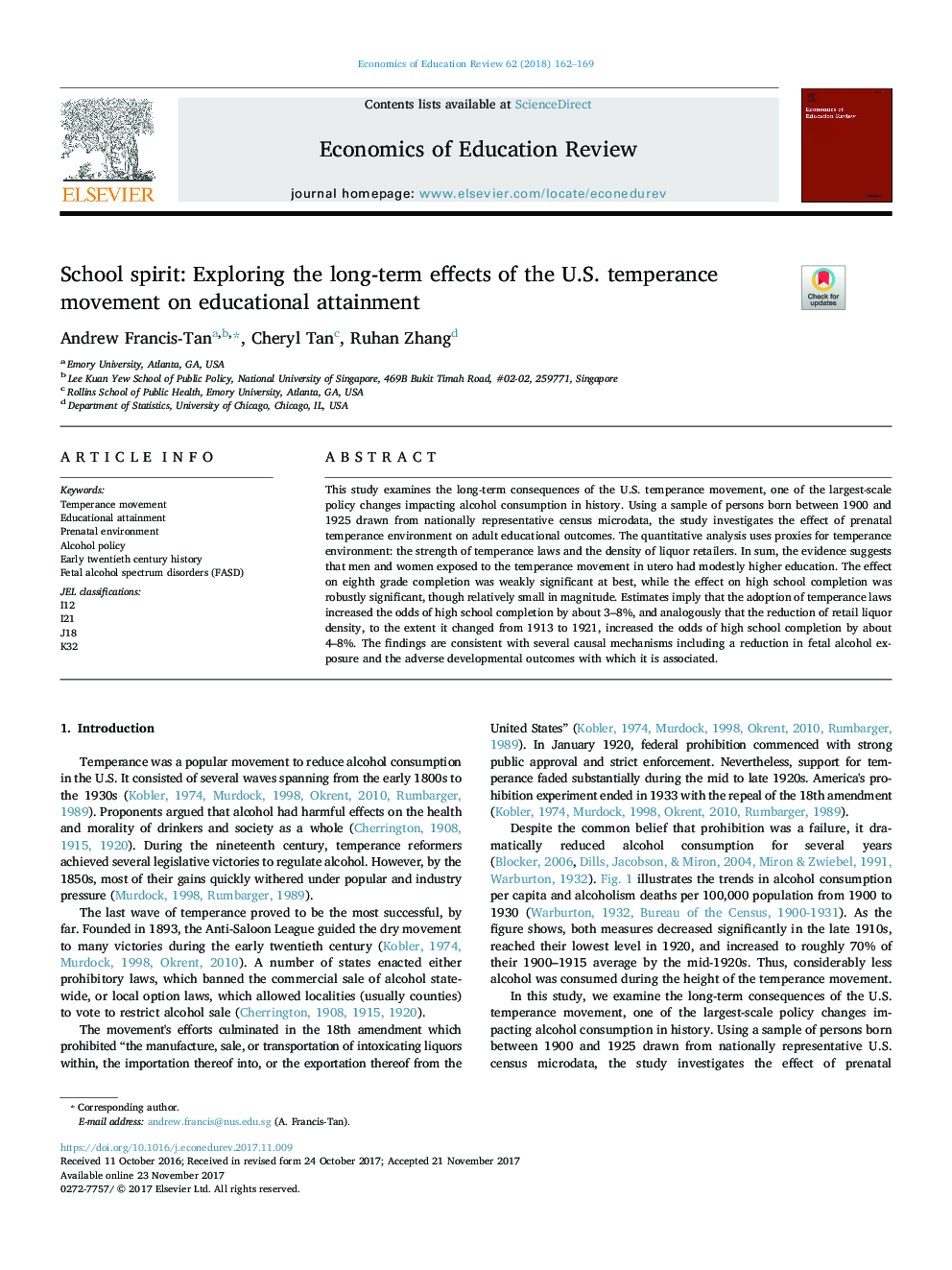| Article ID | Journal | Published Year | Pages | File Type |
|---|---|---|---|---|
| 6840815 | Economics of Education Review | 2018 | 8 Pages |
Abstract
This study examines the long-term consequences of the U.S. temperance movement, one of the largest-scale policy changes impacting alcohol consumption in history. Using a sample of persons born between 1900 and 1925 drawn from nationally representative census microdata, the study investigates the effect of prenatal temperance environment on adult educational outcomes. The quantitative analysis uses proxies for temperance environment: the strength of temperance laws and the density of liquor retailers. In sum, the evidence suggests that men and women exposed to the temperance movement in utero had modestly higher education. The effect on eighth grade completion was weakly significant at best, while the effect on high school completion was robustly significant, though relatively small in magnitude. Estimates imply that the adoption of temperance laws increased the odds of high school completion by about 3-8%, and analogously that the reduction of retail liquor density, to the extent it changed from 1913 to 1921, increased the odds of high school completion by about 4-8%. The findings are consistent with several causal mechanisms including a reduction in fetal alcohol exposure and the adverse developmental outcomes with which it is associated.
Keywords
Related Topics
Social Sciences and Humanities
Economics, Econometrics and Finance
Economics and Econometrics
Authors
Andrew Francis-Tan, Cheryl Tan, Ruhan Zhang,
